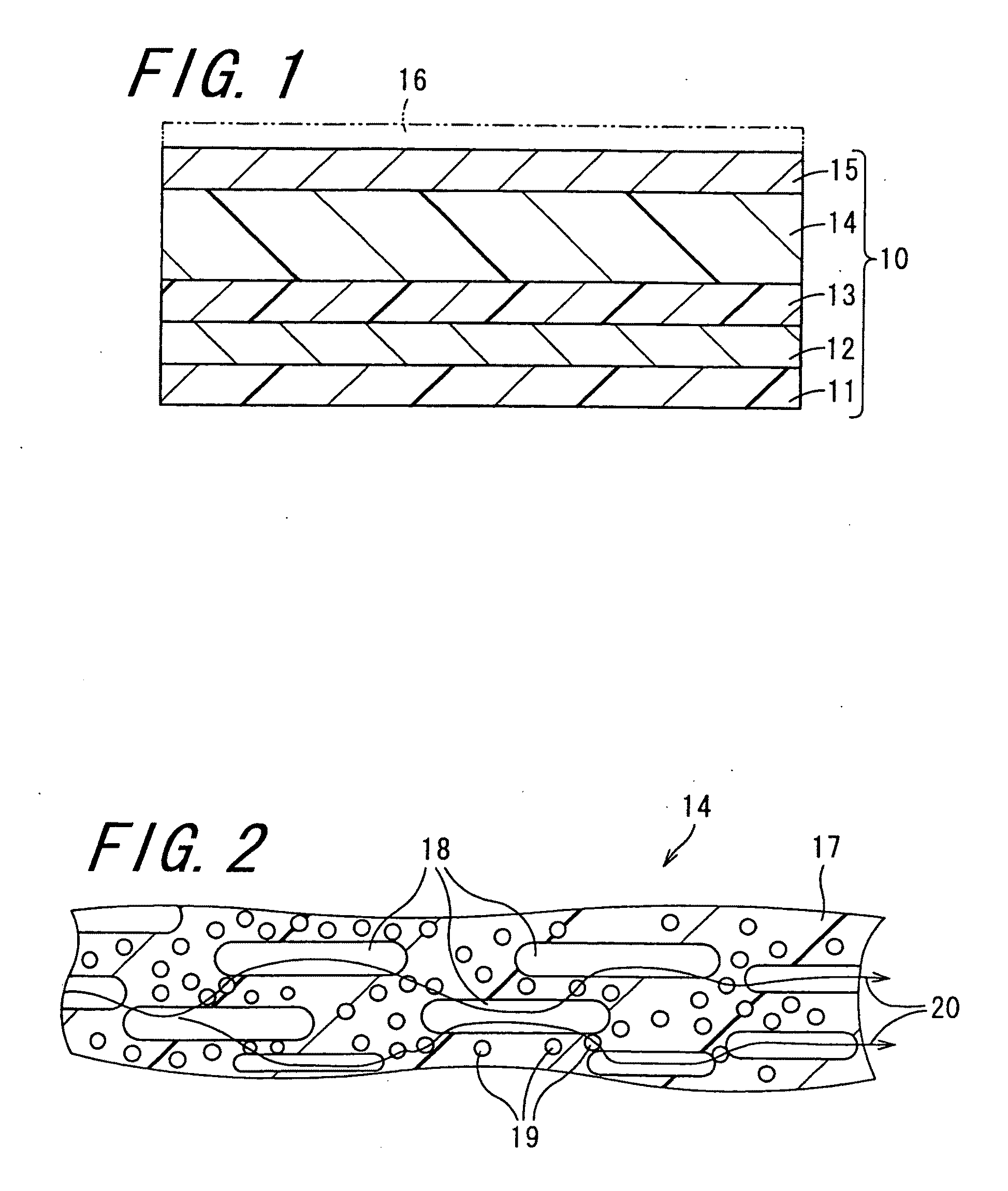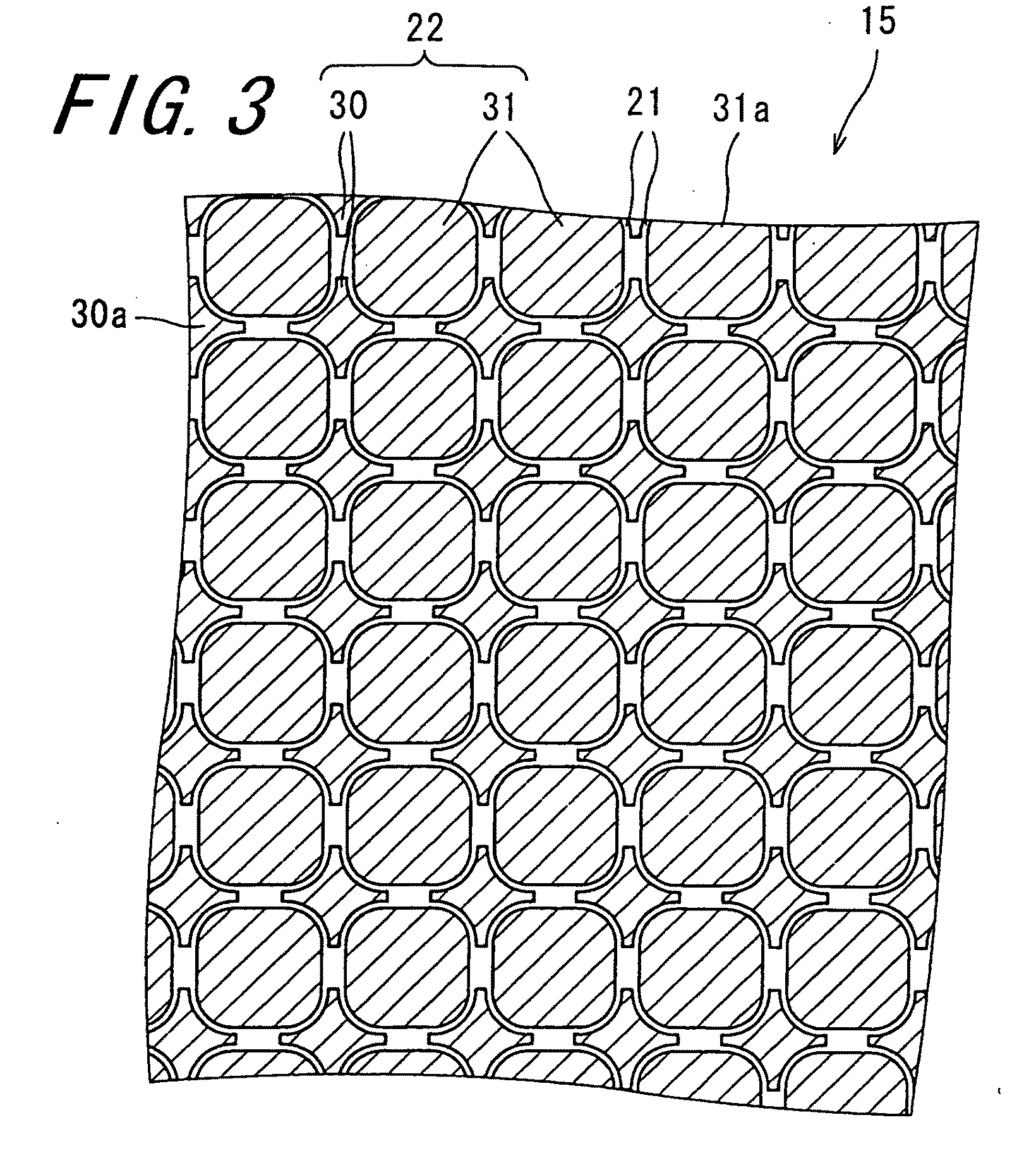Sheet Member for Improving Communication, and Antenna Device and Electronic Information Transmitting Apparatus Provided Therewith
a technology of electronic information and transmission apparatus, which is applied in the direction of electrically short antennas, antenna details, antennas, etc., can solve the problems of significant attenuation of electromagnetic wave signals, inability of tag b>1/b> to perform wireless communication, etc., to achieve the effect of improving communication
- Summary
- Abstract
- Description
- Claims
- Application Information
AI Technical Summary
Benefits of technology
Problems solved by technology
Method used
Image
Examples
example 1
[0290]As the pattern layer 15 and the reflection area forming layer 12, aluminum-evaporated polyethylene terephthalate (polyethylene terephthalate: abbreviated to PET) having a thickness of 100 μm was used. The layer thickness of the aluminum layer in the pattern layer 15 and the reflection area forming layer 12 is 100 μm. The pattern layer 15 was produced by evaporating aluminum on PET to form an aluminum layer, and etching this aluminum layer to form a pattern shape shown in FIG. 19. The first storage layer 14 was produced using a method in which 100 parts by weight of SBS (styrene / butadiene / styrene copolymer) resin, 35 parts by weight of carbon black as a dielectric material, 205 parts by weight of ferrite as a magnetic material, and a dispersant (no magnetic member was used) were mixed, kneaded, and formed into a sheet having a thickness of 1 mm by extrusion molding. The second storage layer 13 was produced as a sheet having a thickness of 1.75 mm in which red phosphorus and mag...
example 2
[0292]As the pattern layer 15 and the reflection area forming layer 12, aluminum-evaporated polyethylene terephthalate (PET) having a thickness of 100 μm was used. The layer thickness of the aluminum layer in the pattern layer 15 and the reflection area forming layer 12 is 0.05 μm. The pattern layer 15 was produced by evaporating aluminum on PET to form an aluminum layer, and etching this aluminum layer to form a pattern shape shown in FIG. 28. The first storage layer 14 was produced using a method in which 100 parts by weight of PVC (KANEKA CORPORATION, KS1700) resin, 80 parts by weight of DOP [dioctyl phthalate (phthalic acid di-2-ethylhexyl) 1,2-benzenedicarboxylic acid bis(2-ethylhexyl)ester], 43 parts by weight of graphite as a dielectric material, 125 parts by weight of ferrite as a magnetic material, and calcium carbonate were mixed, kneaded, and formed into a sheet having a thickness of 0.3 mm by extrusion molding. The second storage layer 13 was produced as a sheet having a...
example 3
[0294]The pattern layer 15 was formed into a pattern shape shown in FIG. 22, and other procedures in the method were the same as those in Example 1.
[0295]Regarding the conductive pattern portions 22 of the pattern layer 15, b1x=b1y=21.0 mm, and d1x=d1y=1.5 mm. When the x direction of the conductive pattern portions 22 of the pattern layer 15 is set to the longer-side direction, and the y direction is set to the shorter-side direction, the rectangular pattern shapes 31a are arranged in the longer-side direction so that each of the centroids matches the center in shorter-side direction.
PUM
 Login to View More
Login to View More Abstract
Description
Claims
Application Information
 Login to View More
Login to View More - R&D
- Intellectual Property
- Life Sciences
- Materials
- Tech Scout
- Unparalleled Data Quality
- Higher Quality Content
- 60% Fewer Hallucinations
Browse by: Latest US Patents, China's latest patents, Technical Efficacy Thesaurus, Application Domain, Technology Topic, Popular Technical Reports.
© 2025 PatSnap. All rights reserved.Legal|Privacy policy|Modern Slavery Act Transparency Statement|Sitemap|About US| Contact US: help@patsnap.com



